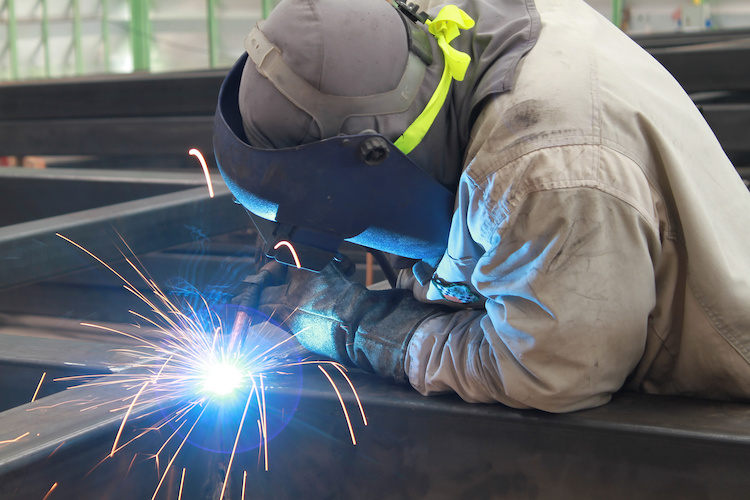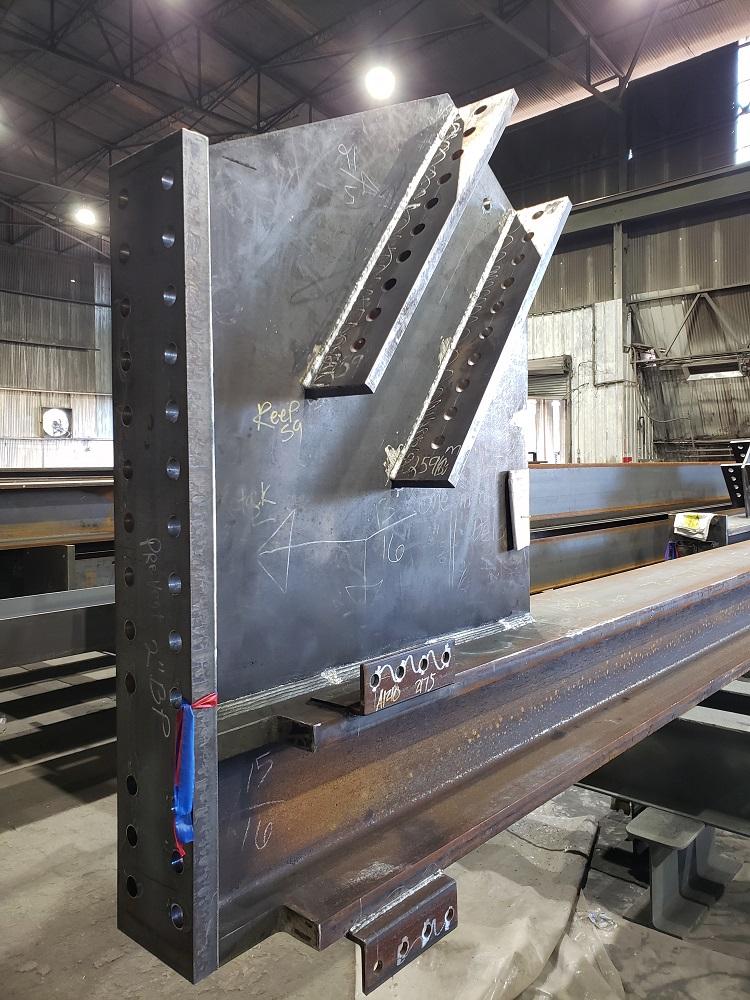Trusted Steel Fixing Providers: Making Certain Architectural Honesty
Trusted Steel Fixing Providers: Making Certain Architectural Honesty
Blog Article
Ingenious Trends in Steel Fabrication: Enhancing Resilience and Precision
In the world of steel manufacture, the quest of resilience and precision has actually caused a wave of ingenious trends that are reshaping the market. From developments in welding technologies to the assimilation of robotic automation in construction processes, the landscape of steel manufacturing is developing swiftly. High-strength alloy growth, coupled with the application of 3D modeling and simulation software application, is pressing the limits of what is possible in terms of architectural honesty and precision. The expanding focus on sustainable techniques in steel production is not only driving efficiency however also fostering an extra eco mindful strategy to fabrication. These fads are not simply forming the present however additionally laying the foundation for the future of steel manufacture, guaranteeing more improvements in sturdiness and accuracy.
Advanced Welding Technologies
In the world of steel manufacture, the adoption of innovative welding technologies has actually significantly revolutionized the market's approach to accomplishing exceptional top quality and precision in architectural welds. Advanced welding innovations, such as laser beam welding and friction stir welding, have actually arised as game-changers in the field. By leveraging these sophisticated welding methods, steel fabricators can raise the resilience, strength, and precision of their architectural welds, satisfying the progressively requiring requirements of modern-day construction projects.
Robotic Automation in Construction
Welcoming robotic automation has actually become a cornerstone of modern steel manufacture methods, improving and enhancing procedures efficiency throughout the market. Robots are changing the way steel elements are made, providing unrivaled precision and speed while decreasing human mistake. These automated systems can manage repetitive jobs with regular accuracy, resulting in better end products.
One key benefit of robotic automation in steel construction is the capability to function all the time without tiredness, dramatically raising manufacturing result. This continual procedure decreases downtime and accelerates task timelines, ultimately saving costs for producers. Additionally, robotics can be set to execute intricate jobs that might be harmful or difficult for human workers, improving safety in the workplace.
Furthermore, robot automation allows smooth integration with other electronic innovations, such as computer-aided design (CAD) software and Web of Points (IoT) systems (steel fixing). This interconnected strategy improves interaction in between different phases of construction, maximizing workflows and guaranteeing real-time surveillance and control. As the steel fabrication industry remains to advance, robotic automation stands apart as a transformative pressure driving performance and accuracy in producing processes

High-Strength Alloy Growth
The advancement of high-strength alloy development in steel fabrication is reshaping the industry's approach to enhancing material toughness and performance. High-strength alloys are engineered to display exceptional mechanical residential or commercial properties, such as raised tensile stamina, toughness, and rust resistance compared to typical steel qualities. By including these advanced alloys right into manufacture procedures, producers can generate parts that stand up to higher tension degrees and rough atmospheres, causing more resilient and reputable final result.
One trick advantage of high-strength alloy growth is the ability to lower material density without jeopardizing architectural stability. This not only results in lighter-weight parts however likewise adds to cost savings and boosted performance in fabrication and assembly processes. Moreover, the boosted strength-to-weight ratio of these alloys permits for the design and building and construction of frameworks with higher load-bearing abilities while decreasing general weight.
3D Modeling and Simulation Software Program
Developments in steel manufacture processes have actually been significantly pushed by the integration of cutting-edge 3D modeling and simulation software application devices. These tools permit fabricators to create thorough online designs of their projects, enabling them to envision the final product with precision prior to any type of physical work begins. By replicating numerous stress and anxiety elements, ecological problems, and architectural lots, producers can enhance layouts for enhanced sturdiness and performance. Additionally, 3D modeling and simulation software streamline the manufacturing procedure by recognizing best site potential concerns at an early stage, reducing the demand for expensive rework and reducing product waste.

Lasting Practices in Steel Manufacturing
Incorporating lasting techniques into steel production processes is vital for lessening ecological impact and making certain long-lasting resource schedule. One key lasting practice is the fostering of energy-efficient technologies to decrease greenhouse gas discharges during the steel production process. This consists of making use of renewable resource sources, such as solar or wind power, to power steel plants and applying energy-efficient equipment to maximize power usage.
One more critical facet of lasting steel production is the liable sourcing of resources. This entails guaranteeing that the iron ore and other sources utilized in steelmaking are gotten from ecologically friendly and honest resources. By advertising openness in the supply chain and sticking to rigorous ecological requirements, steel manufacturers can minimize the negative influences of source removal on regional communities and communities.

Verdict
To conclude, the ingenious trends in steel manufacture such as innovative welding innovations, robotic automation, high-strength alloy advancement, 3D modeling and simulation software, and sustainable methods are boosting the toughness and accuracy of steel products. These developments are reinventing the steel construction market by enhancing quality, efficiency, and sustainability. It is clear that the future of steel manufacture exists in embracing these cutting-edge innovations to fulfill the needs of contemporary construction and manufacturing markets.
In the world of steel manufacture, why not check here the search of toughness and accuracy has actually led to a wave of ingenious patterns that are improving the market.In the world of this website steel fabrication, the fostering of sophisticated welding technologies has considerably changed the industry's technique to accomplishing superior top quality and precision in architectural welds. As the steel manufacture industry proceeds to develop, robot automation stands out as a transformative pressure driving performance and precision in manufacturing processes.
Additionally, reusing and reusing steel scrap and waste products play a considerable function in boosting the sustainability of steel production. Alpha reo.In conclusion, the ingenious patterns in steel manufacture such as innovative welding innovations, robot automation, high-strength alloy growth, 3D modeling and simulation software program, and lasting techniques are boosting the resilience and accuracy of steel products
Report this page